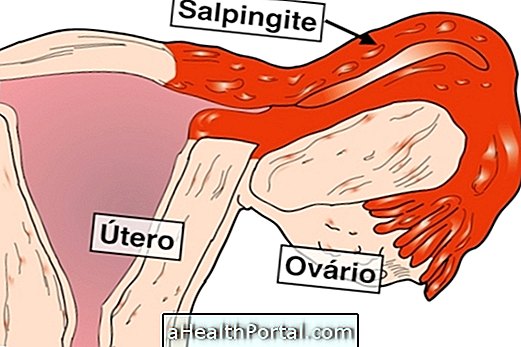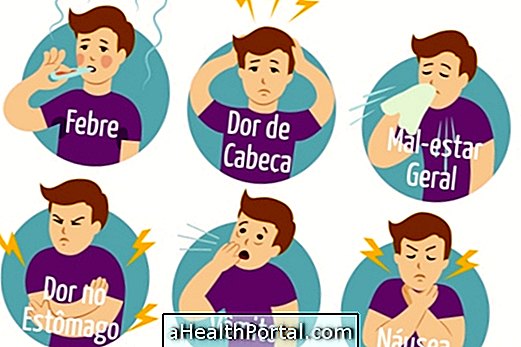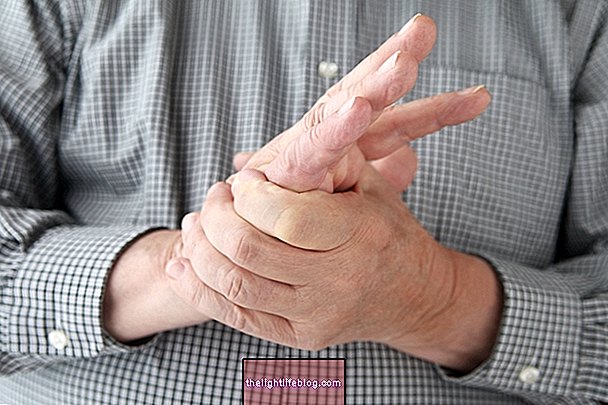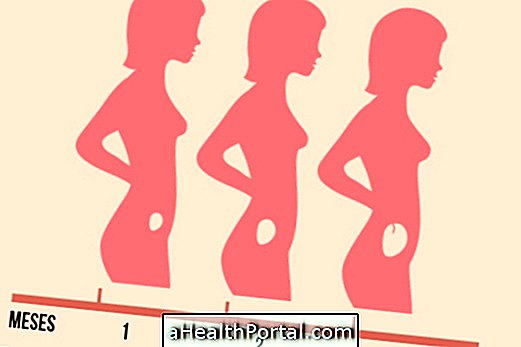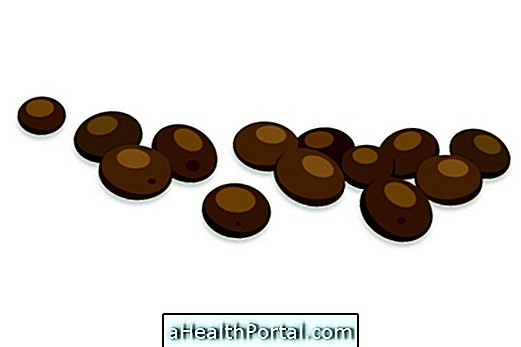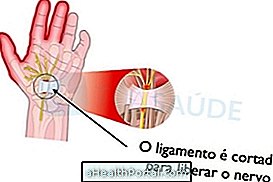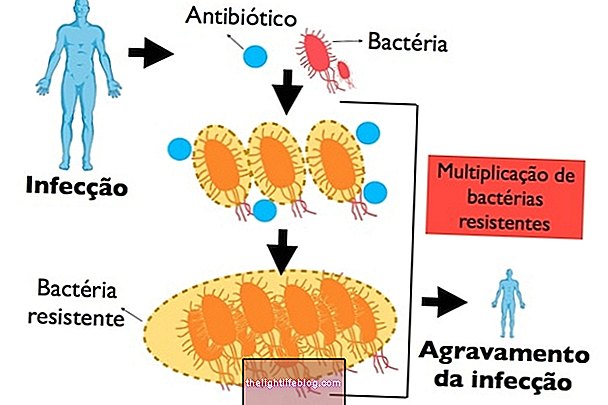Chemotherapy is a form of treatment that uses drugs capable of eliminating or blocking the growth of cancer cells. These medicines, which can be taken orally or injected, are carried through the bloodstream to all parts of the body, which end up reaching not only the cancer cells, but also the healthy cells of the body, especially those that multiply more frequently, like the digestive tract, hair follicles and blood.
Thus, it is common for side effects to occur in people who experience this type of treatment, such as nausea, vomiting, hair loss, weakness, anemia, constipation, diarrhea or mouth injuries, which usually last for days, weeks or months. However, not all chemotherapies are the same, there is a wide variety of drugs used, which can cause more or less effects on the body.
The type of remedy is decided by the oncologist, after evaluation of the type of cancer, the stage of the disease and the clinical conditions of each person, and some examples include medicines like Cyclophosphamide, Docetaxel or Doxorubicin, which many may know as white chemotherapy or red chemotherapy, for example, and we will explain it better below.

Main side effects
The side effects of chemotherapy depend on the type of drug, the dose used and the response of the body of each person, and in most cases last a few days or weeks, disappearing when the treatment cycle ends. Some of the most common side effects include:
- Hair loss and other body hair;
- Nausea and vomiting;
- Dizziness and weakness;
- Constipation or diarrhea and excess gas;
- Lack of appetite;
- Wounds in the mouth;
- Changes in menstruation;
- Brittle and dark nails;
- Skin blemishes or changes in color;
- Bleeding;
- Recurrent infections;
- Anemia;
- Decreased sexual desire;
- Anxiety and mood changes such as sadness, melancholy and irritability.
In addition, there may be long-term side effects of chemotherapy, which may last for months, years, or even be permanent, such as changes in the reproductive organs, cardiac, pulmonary, hepatic and nervous system changes, but it is important remember that the side effects are not manifested in the same way in all patients.
How is chemotherapy done?
To perform chemotherapy there are more than 100 types of medications used, either in pill, orally, or injectables, which can be through the vein, intramuscularly, under the skin and into the spine, for example. In addition, to facilitate vein doses, a catheter, called intra-cath, can be implanted, which is fixed to the skin and prevents repeated stings.
Depending on the type of cancer drug, doses may be daily, weekly, or every 2 to 3 weeks, for example. Usually, this treatment is done in cycles, which usually last a few weeks, followed by a rest period to allow the body to recover and for further evaluation.

Differences between white and red chemotherapy
Popularly, some people talk about differences between white and red chemotherapy, according to the color of the medicine. However, this differentiation is not adequate, since there are many types of drugs used for chemotherapy, which can not be determined by color alone.
In general, as an example of white chemotherapy, there are the group of medicines called taxanes, such as Paclitaxel or Docetaxel, which are used to treat various types of cancer, such as breast or lung, and cause inflammation as a common side effect of the mucous membranes and the decrease of the body's defense cells.
As an example of red chemotherapy, we can mention the group of anthracyclines, such as Doxorubicin and Epirubicin, used to treat various types of cancer of adults and children, such as acute leukemias, breast cancer, ovaries, kidneys and thyroid, and some of the side effects caused are nausea, hair loss, abdominal pain, and are toxic to the heart.
Frequently Asked Questions About Chemotherapy
Conducting chemotherapy can bring many doubts and insecurities. Here we try to clarify some of the most common:
1. What type of chemotherapy will I do?
There are numerous protocols or chemotherapy regimens, which are prescribed by the oncologist according to the type of cancer, the severity or stage of the disease and the clinical conditions of each person. There are schedules with daily doses, weekly or every 2 or 3 weeks, which are done in cycles.
In addition, it is important to remember that there are other treatments that may be associated with chemotherapy, such as tumor removal surgery, or radiation therapy, procedures that use radiation emitted by a device to eliminate or reduce the size of the tumor.
Thus, chemotherapy can also be divided into:
- Curative, when by itself is able to cure cancer;
- Adjuvant or Neoadjuvant, when done before or after surgery to remove the tumor or radiotherapy, as a way to complement the treatment and seek the elimination of the tumor more effectively;
- Palliative, when it has no curative purpose, but acts as a way to prolong life or improve the quality of life of the person with cancer.
It is important to remember that all people who undergo cancer treatment, including those who can no longer cure, deserve a treatment to have a decent quality of life, which includes the control of physical, psychological and social symptoms, in addition to of other actions. This so important treatment is called palliative care, know more about it in what palliative care and who should receive it.
2. Will my hair ever fall?
Hair and hair strands will not always fall, as it depends on the type of chemotherapy used, however, it is a very common side effect. Usually, the wires fall about 2 to 3 weeks after the start of treatment, and it usually happens little by little or in strands.
It is possible to minimize this effect with the use of a thermal cap for cooling the scalp, since this technique can reduce the blood flow to the hair follicles, reducing the capture of the medicine in this region. In addition, it is always possible to wear a hat, scarf or wig which helps to overcome the bother of balding.
It is also very important to remember that the hair regrows after the end of the treatment.
3. Will I feel pain?
Chemotherapy itself does not usually cause pain, except for the discomfort caused by the bite or a burning by the application of the product. Excessive pain or burning should not happen, so it is important to tell the doctor or nurse if this happens.
4. Will my diet change?
It is recommended that the patient undergoing chemotherapy prefer a diet rich in fruits, vegetables, meat, fish, eggs, seeds and whole grains, giving preference to natural foods instead of processed foods and organic foods as they do not have any chemical additives.
The vegetables should be well washed and disinfected, and only in some cases where there is excessive immunity, the doctor may recommend not consuming raw food for a period.
In addition, it is necessary to avoid fat and sugar-rich meals immediately before or after treatment, as nausea and vomiting often occur, and to decrease these symptoms the doctor may indicate the use of medicines such as Metoclopramide. See other tips on eating at what to eat to lessen the side effects of chemotherapy.
5. Can I maintain my intimate life?
There may be changes in the intimate life, since there may be a decrease in sexual desire and a decrease in mood, but there are no contraindications for intimate contact.
However, it is very important to remember the use of condoms to avoid not only sexually transmitted infections during this period, but especially to avoid pregnancy, since chemotherapy can cause changes in the baby's development.

